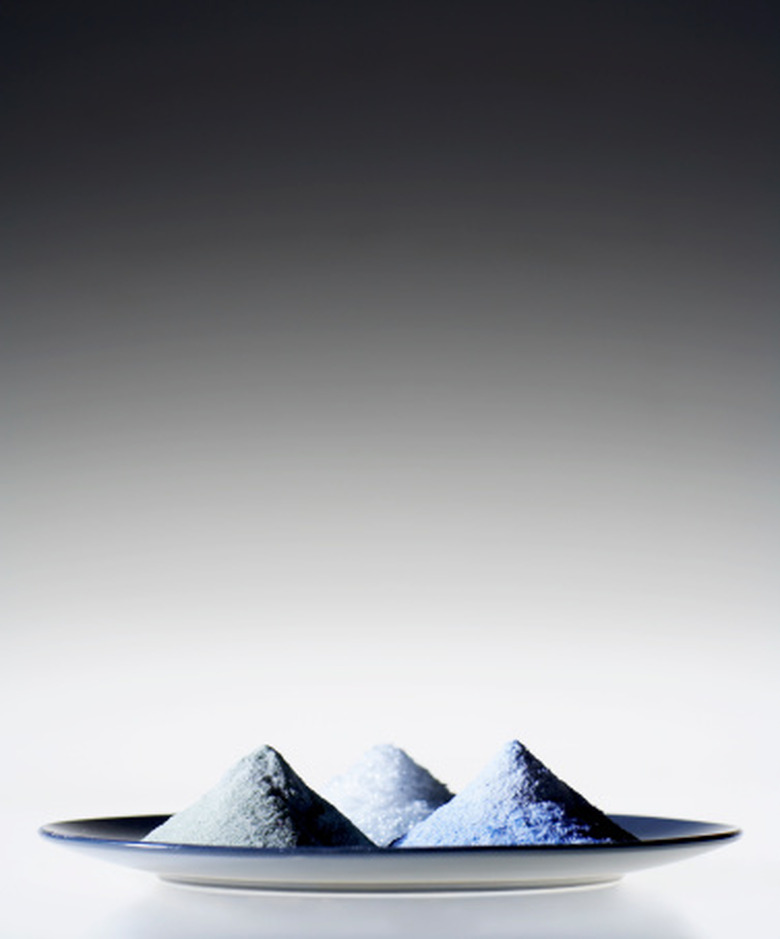How To Calculate The Volume Of A Powder Mixture
You can easily measure the packing, or bulk, volume of a given amount of a powder mixture by placing it in a graduated cylinder. But any powder mixture will contain some air, and the packing volume, no matter how tightly pressed in the graduated cylinder, will not represent the true volume of the material itself.
To find the volume and density of a powder mixture, you will need a liquid that will not dissolve or chemically alter any of the powders in the powder mixture.
For instance, water will dissolve a mixture of sugar and salt and hence cannot be used for this purpose. (Bulk density refers the mass of powder or soil within a certain volume, making the term somewhat confusing.)
Step 1
Place a filter on the scale and note the mass.
Measure out at least a 25-mg of scoop of the powder mixture by placing it on a scale until the scale reads the desired amount over the observed mass of the filter. For example, to get a hefty 5-g sample given a 0.05-g filter, the total mass must reach 5.05 g (5,050 mg). Set the powder mixture and the filter beneath it aside.
Step 2
Place a graduated cylinder on the scale and note the mass. Add 25 milliliters (ml) of liquid to the graduated cylinder. As with the powder, determine the mass of the liquid by itself by subtracting the mass of the graduated cylinder from the mass reading on the scale.
Step 3
Determine the density of the liquid by dividing the mass of the liquid by the 25 ml volume. Write this density number down and label it DL.
Step 4
Add the 5 g of powder to the pycnometer and weigh the pycnometer, stopper and powder on the scale. A pycnometer contains a stopper and a small capillary tube that sucks out any excess air in a mixture. Write down this mass and label it M1.
Step 5
Add liquid from the graduated cylinder to the pycnometer until it is full. Place the stopper in the pycnometer. Wipe away any expelled liquid with a filter until the pycnometer stops expelling air and liquid.
Step 6
Weigh the powder, pycnometer and liquid mixture on the scale. Label this mass M2. Determine the mass of the liquid (ML) used to fill the pycnometer by subtracting M1 from M2.
Step 7
Determine the volume of the liquid (VL) added to the pycnometer by using the relationship volume = mass/density, or in this case, VL = ML/DL.
Step 8
Determine the volume of 5 g of powder by subtracting VL from 25 ml, which is the total volume of space inside the pycnometer.
Things Needed
- Scale
- Graduated cylinder
- 25 ml pycnometer
- Liquid
- Filters
TL;DR (Too Long; Didn't Read)
You can determine the particle density of the powder mixture by using the equation density = (mass/volume).
Cite This Article
MLA
Rutter, James. "How To Calculate The Volume Of A Powder Mixture" sciencing.com, https://www.sciencing.com/calculate-volume-powder-mixture-8113922/. 17 July 2019.
APA
Rutter, James. (2019, July 17). How To Calculate The Volume Of A Powder Mixture. sciencing.com. Retrieved from https://www.sciencing.com/calculate-volume-powder-mixture-8113922/
Chicago
Rutter, James. How To Calculate The Volume Of A Powder Mixture last modified March 24, 2022. https://www.sciencing.com/calculate-volume-powder-mixture-8113922/
